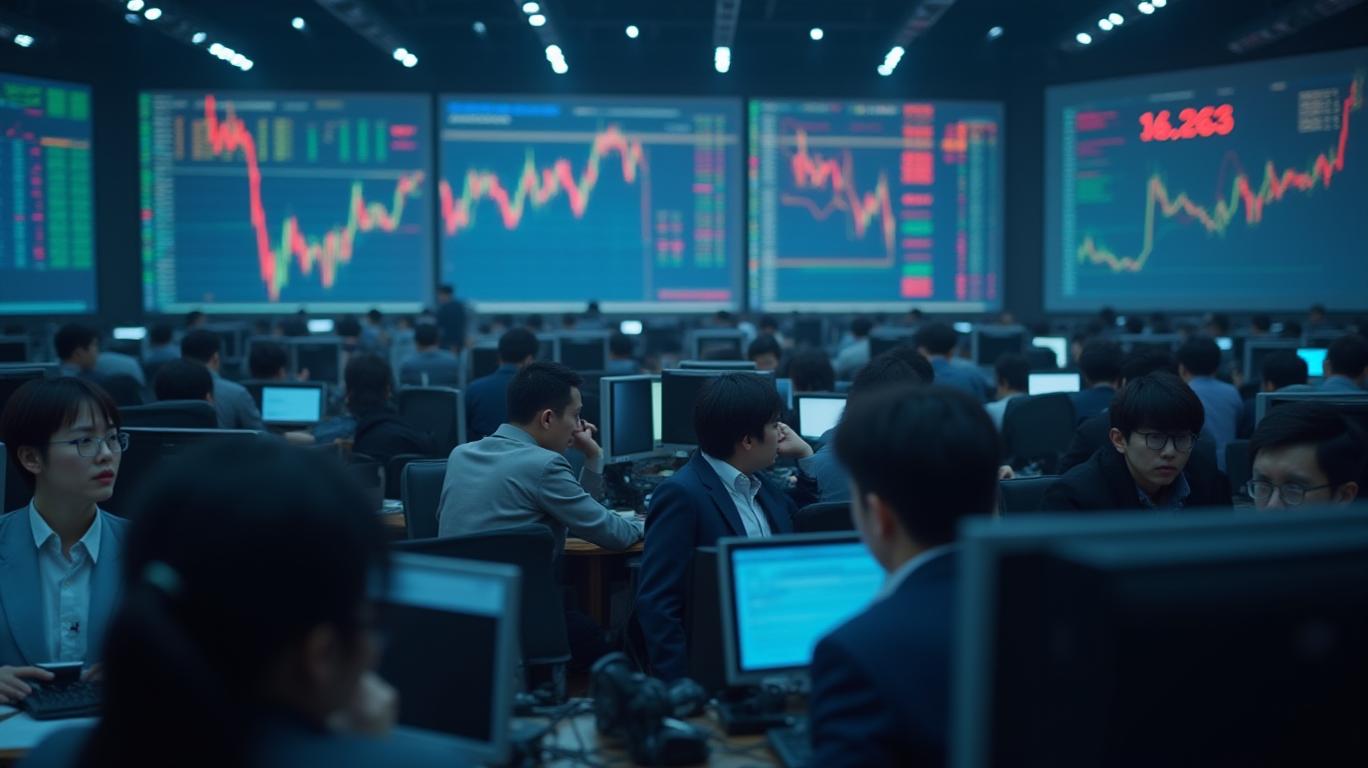China's 1.7 Trillion Yuan Reverse Repo Surge: A Liquidity Lifeline Amid Global Storms
The People’s Bank of China (PBOC) unleashed a massive liquidity injection in April 2025, conducting 1.7 trillion yuan ($246 billion) of outright reverse repos, a move aimed at stabilizing financial markets amid escalating U.S. tariff threats and domestic economic headwinds. This aggressive maneuver underscores the central bank’s resolve to combat liquidity strains while navigating a precarious balancing act between growth support and financial stability.

Decoding the Reverse Repo Surge
Reverse repos are short-term tools where the PBOC buys securities from commercial banks, injecting cash into the system. The April 2025 operation was the largest monthly outright reverse repo injection since the instrument’s introduction in 2023, exceeding even the 1.8 trillion yuan in maturing reverse repos and medium-term lending facility (MLF) loans due to expire that month. Analysts at Citic Securities note this move was critical to offsetting “a perfect storm” of pressures:
- U.S. Tariff Threats: Proposed 145% tariffs on Chinese goods, which risked disrupting trade and investor confidence.
- Government Bond Issuance: Record-high debt sales totaling 1 trillion yuan in April, straining market liquidity.
- Seasonal Cash Demands: Lunar New Year holidays and corporate tax deadlines amplified short-term cash needs.
The PBOC also paired this with a 600 billion yuan one-year MLF injection, marking the largest such operation since December 2023. Together, these actions created a net liquidity injection of 500 billion yuan, signaling a shift toward longer-term funding amid short-term pressures.
Why Now? Context Matters
The April operation was part of a broader strategy to counter a slowing economy. China’s GDP growth had dipped to 4.7% year-on-year in Q2 2024, with deflationary risks mounting—10-year government bond yields hit a record low of 2.038% in September 2024. The PBOC’s actions mirrored its “moderately loose monetary policy” stance, prioritizing:
- Liquidity Management: Stabilizing interbank rates amid maturing debt.
- Sectoral Support: Directing funds toward green energy, technology, and elderly care to align with long-term growth goals.
- Currency Stability: Preventing the yuan’s depreciation, which had fallen nearly 2.5% against the dollar in late 2024.
Risks and Remaining Challenges
While the April intervention was decisive, analysts caution that structural issues persist:
1. Real Estate Crisis: Property sales remain depressed, with home prices down 5% year-on-year in Q1 2025.
2. Deflation Risks: Falling prices and a flat yield curve signal weak demand, despite rate cuts.
3. Global Uncertainty: U.S. Federal Reserve policy and trade tensions could destabilize capital flows.
Goldman Sachs estimates that a 1% yuan depreciation could cost China’s export sector $130 billion annually, amplifying the PBOC’s need to balance liquidity support with exchange rate management.
The Broader Implications
The April 2025 reverse repo surge highlights two key trends:
1. Shift to Short-Term Liquidity Tools: The PBOC is deemphasizing MLF’s policy role, favoring short-term reverse repos to fine-tune liquidity.
2. Preparation for Worse: Analysts like Morgan Stanley’s Laura Wang argue this move hints at a “preemptive” strategy to head off deeper economic slumps, with further reserve requirement ratio (RRR) cuts likely by year-end.
Conclusion: A Lifeline, but Not a Cure
The PBOC’s 1.7 trillion yuan reverse repo injection was a masterstroke in liquidity management, addressing immediate pressures while signaling long-term resolve. However, the $246 billion infusion is no panacea for China’s structural challenges. With deflation, real estate stagnation, and geopolitical risks looming, investors should monitor two critical indicators:
- Yuan Stability: A depreciation beyond 7.30 to the dollar could trigger capital flight.
- Growth Metrics: A rebound in Q2 GDP beyond 5% would validate the central bank’s strategy.
For now, the PBOC’s liquidity lifeline buys time—but structural reforms and global cooperation will ultimately determine whether China’s economy can weather the perfect storm.

Comments
No comments yet